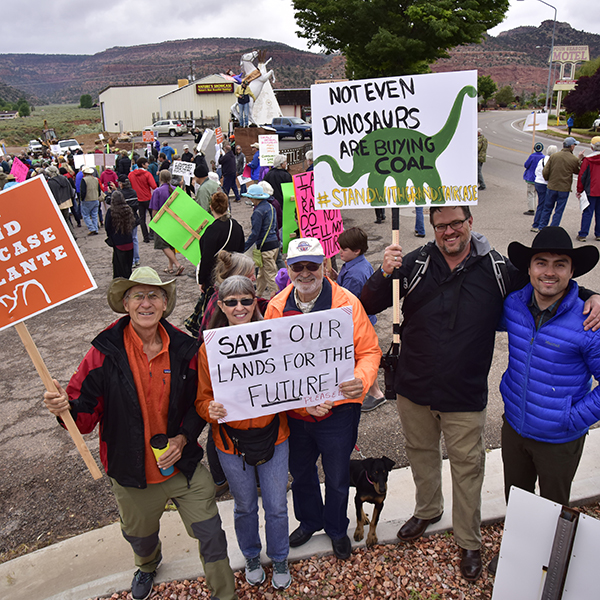Within your first few steps on the trail, you arrive at the first stop of this interpretive hike. If you’re interested in learning about the geology and ecology of the area, pick up a trail guide here at post one. The information in the printed guide corresponds to numbered posts along the length of the trail.
The trail ascends 250 feet almost immediately after leaving the parking lot. As you climb, look west for great views of Wide Hollow Reservoir, the campground, and pink cliffs in the far distance. Powell Point, the promontory more than 15 miles west of the park, is also visible from here.
Exploring the pygmy forest
You pass several numbered posts within a few tenths of a mile, and soon the trail leads through a forest of piñon pine and juniper trees. This woodland community, called a pygmy forest for the dwarfed growth size, contains trees that are actually hundreds of years old. The trees’ stunted growth results from the limited water availability in this desert environment.
About a half mile into the hike, you reach the top of the ridge where the ground flattens out. The trail soon branches into a loop, so stay right at post 8 to follow the trail counterclockwise. A few hundred feet of easy walking brings you to a vista where you can see the town of Escalante to the southeast.
From here, the trail meanders past chunks of petrified wood. Escalante Petrified Forest State Park contains an estimated five and a half million tons of petrified wood within 1,400 acres. These colorful logs are fossilized remains of trees buried in flood plains and covered in volcanic ash millions of years ago. In an oxygen-free environment underground, the trees’ organic materials were eventually replaced with minerals. Carried by groundwater, silica and other minerals from the volcanic ash soaked into the cellular structure of the wood, thus preserving the trees in stone. Erosion has exposed the petrified wood and allows us to glimpse these beautiful geologic remnants. Collecting petrified wood is not allowed; do not remove any pieces from the park.
Sleeping Rainbows Trail
At 0.75 mile, you come to a junction marked with signs. Turning right onto the Sleeping Rainbows Trail takes you on an optional three-quarter-mile loop past the highest concentrations of petrified wood. But it is quite steep—know your hiking abilities and limitations, and decide if you want to venture down the trail extension or opt to continue left on the Petrified Forest Trail.
Following the Sleeping Rainbows Trail, you descend a steep ravine. Large chunks of petrified wood, up to four feet in diameter, sit along the trail. Minerals present during the petrifying process produce the spectrum of colors in the wood. Blue and green flecks come from copper, cobalt, and chromium; carbon makes black; manganese produces pink hues, and iron content creates red to brown, yellow, or green.
The route is well defined, but if you want confirmation that you’re headed the right direction, look for brown stakes with white arrows that mark the trail.
You return to the top of the ridge at about 1.5 miles, completing the Sleeping Rainbows Trail; turn right on the Petrified Forest Trail to finish the loop.
A few hundred feet later, at post 12, you pass the largest single piece of petrified wood on the trail. Continuing on, you’ll pass more points of interest, then the trail winds southeast until it rejoins the section you already hiked at post 8. Stay right at this junction to finish the hike and return to the trailhead, a round trip of 2.2 miles.
Heading west on UT 12 from Escalante, continue about 1.5 miles. You see a sign for Escalante Petrified Forest State Park shortly before turning right on Reservoir Road. Another 0.7 mile brings you to the park’s fee station. From here, the trailhead parking lot is off to your right, marked with a “hiking trail” sign and an arrow pointing right. Continue up the short driveway to a tri-paneled sign that explains the area’s history and geology. Trail guides are available at the beginning of the hike, which starts on the east side of the parking lot at post 1.
Join the Grand Canyon Trust today to receive your adventure kit:

Weigh in on proposed plans and projects that affect Grand Staircase-Escalante and other public lands across the plateau.

Love Grand Staircase? A gift to the Trust supports on-the-ground work and the protection of your favorite places across the Colorado Plateau.

We're looking for volunteers to gather information about pinyon jays in Grand Staircase-Escalante National Monument and beyond.